For two centuries fishermen in Bangladesh have relied on the whiskered river dwellers. Today, the practice is at risk of fading away.
GOPRA VILLAGE, Bangladesh—
As I slide down a crumbling riverbank toward the long wooden boat, I smell a foul odor, like fermented mud. Most rural rivers in Bangladesh don’t stink despite their murky green and brown waters. But here, the distinctly pungent smell makes me recoil.
I gingerly shuffle along the narrow boat and bump against a bamboo crate perched on one end. The box erupts in a cacophonous choir of high-pitched squeals and squeaks. Then I realize the odd musk isn’t the river; it’s coming from the river otters captured inside the crate. They jostle as three fishermen push off from shore with long wooden oars. When I peer into the box, the squeaks grow louder. The otters poke webbed paws and whiskered snouts between the slats, and scrape their claws at the bamboo.
We are on the Chitra River in Gopra village in southwest of Bangladesh, heading out for an afternoon of fishing with help from these unusual partners. For at least two centuries, tame river otters have assisted fishermen here and in a few nearby districts.
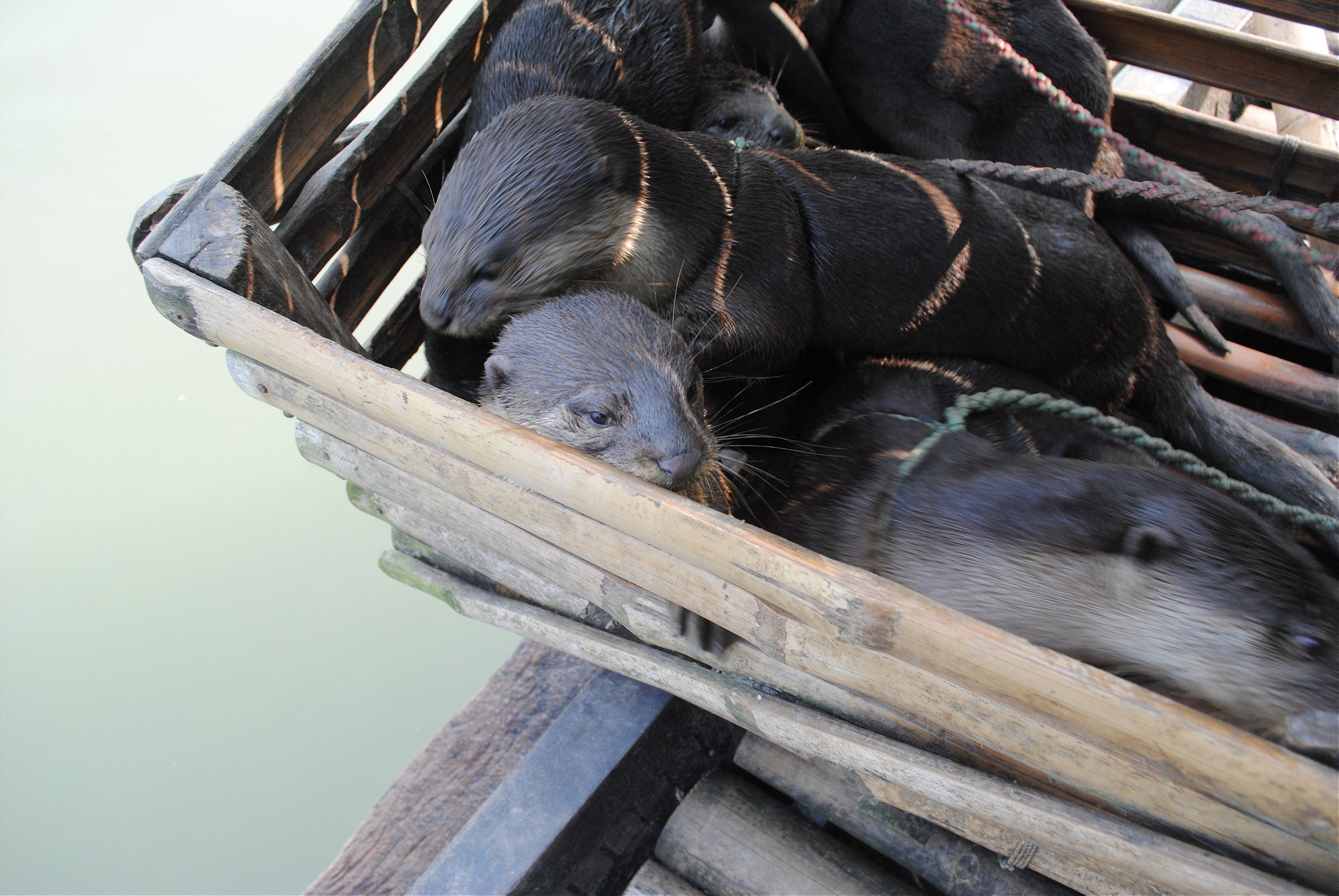
These days, the tradition is becoming increasingly rare. The fishermen I’m with say the river has become more saline and there are fewer fish to catch. Sluice gates that control water flow into rivers also restrict larger fish from entering canals. And young people often want work that is easier and more reliable.
We’re not far from the riverbank when one fisherman opens the lid of the crate. The otters scramble out and hurl themselves into the river in a blur. There’s only a moment to glimpse their sleek brown bodies, which are about three feet long from nose to long, tapered tail. In the river, the otters swim gleefully and duck and dive into the water, agile as dolphins. They paddle with their cat-like faces and whiskers peeping out of the water as they call to each other.
This is a family of otters: two parents and four pups about a year old, all wearing rope harnesses. The otters don’t swim far. The parents and one youth swim within 20 feet of the boat on ropes attached to long wooden poles. The pups are unleashed but swim close to the others.
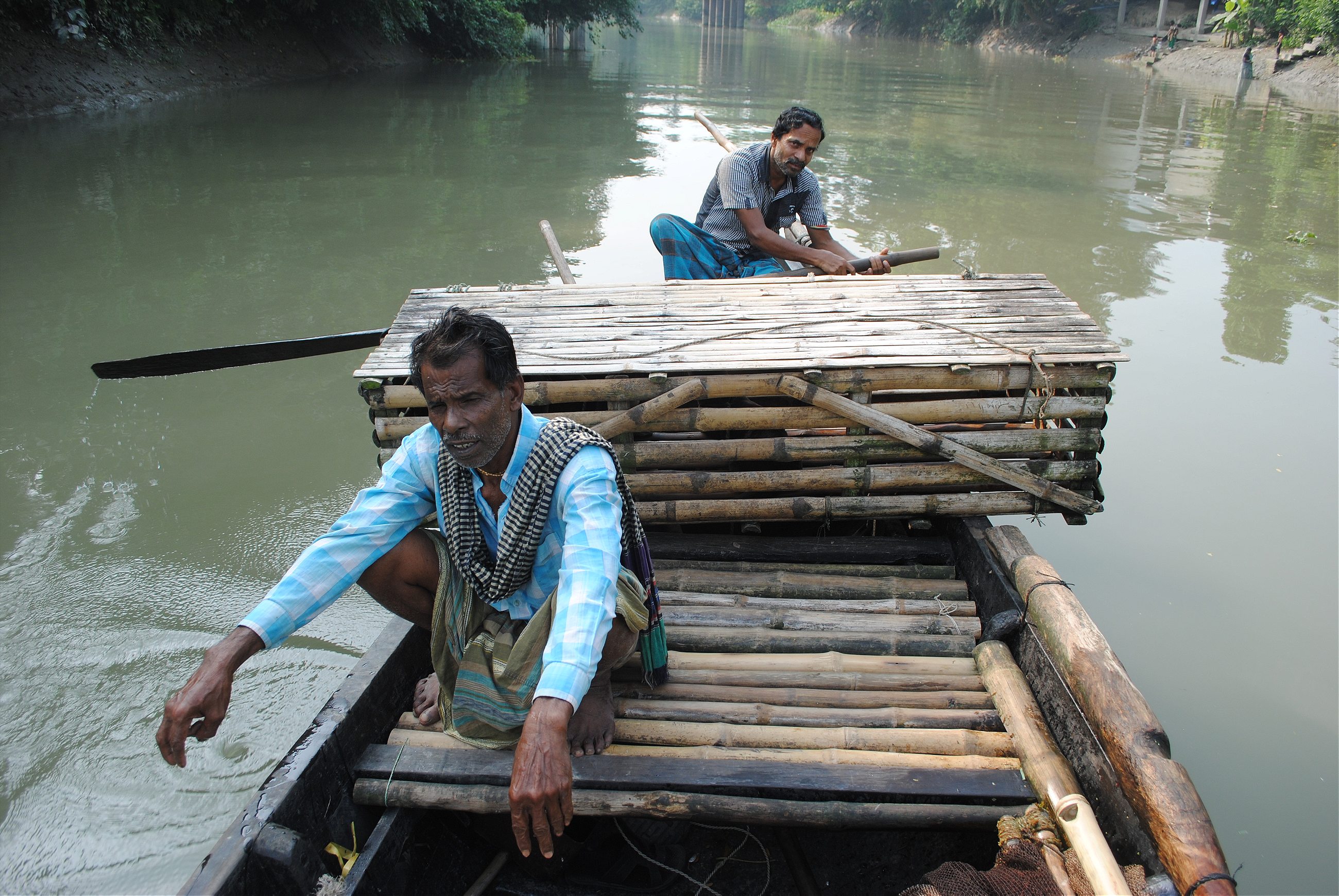
As we glide along the river, two fishermen lower a net that runs along one side of the boat. The otters supposedly assist by chasing fish into the net. But with all their frolicking and chortling, it isn’t clear if they’re working or playing.
Indeed, when the fishermen raise the net, the catch is small. There are only tiny fish that look like trembling silver leaves, a few tranparent wormy creatures, and a stray shrimp. The fishermen throw most of the catch back into the water. The otters’ webbed paws act like little baseball mitts to catch fish in mid-air.
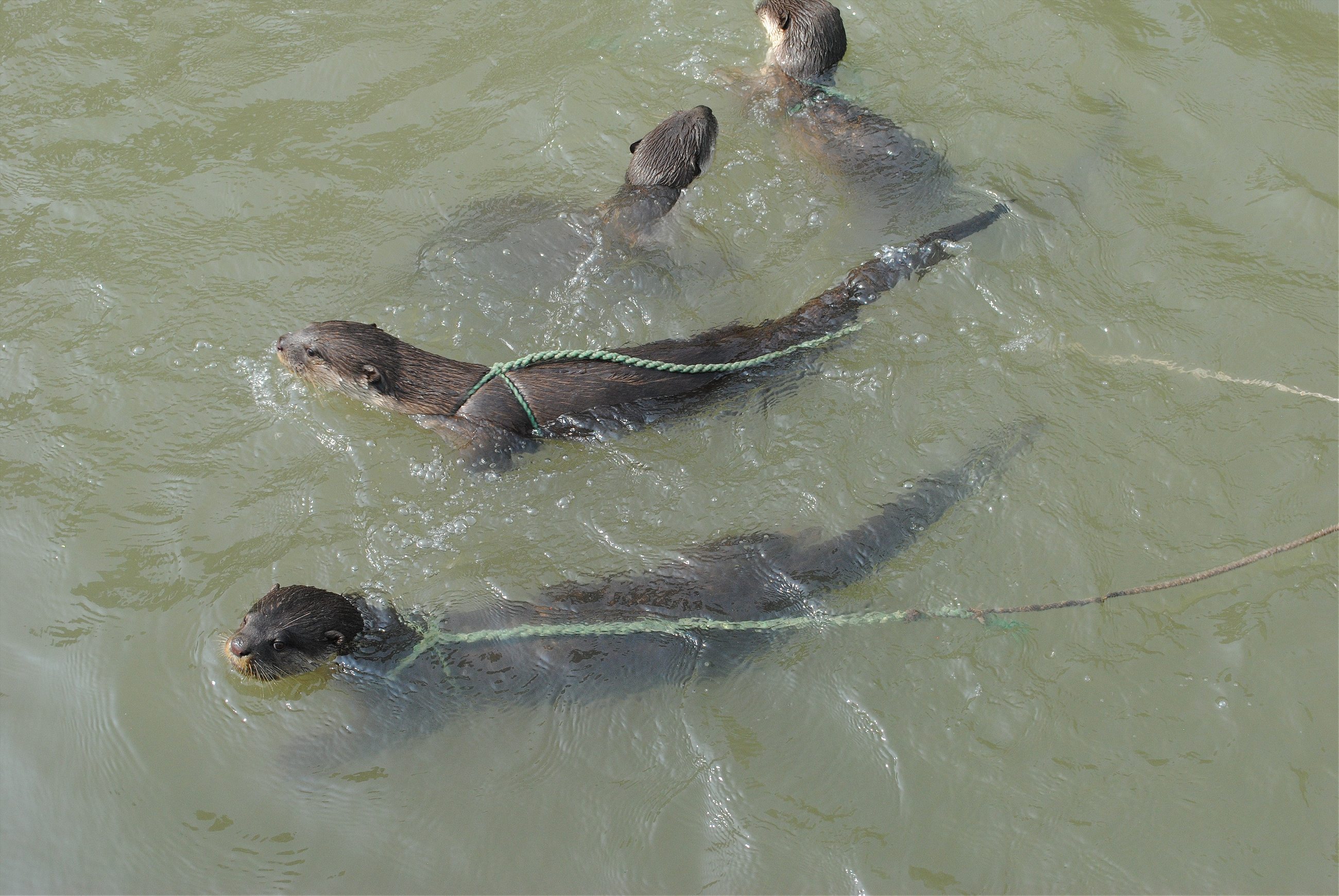
“Water snacks,” my guide says of the small fish. It seems an apt term—until I realize he meant “water snake.” I glance at a skinny reptile squirming in the net.
The fishermen and otters work best at night when they can catch upwards of 20 pounds of fish. They can help earn the fishermen about 2,000 taka a day—roughly $25—to be split among the group. Adult otters weigh approximately 20 pounds and consume six pounds of fish daily, much of it as they work.
He could be his family’s last generation of otter fishermen.
Robin Biswas, the 40-year-old fisherman who owns the otters, wears a green checked lungi—a sarong worn by men—and calls and clucks to the otters as they swim. He seems puzzled when asked how the otters were trained. The animals are born and raised in captivity; pups learn from tamed parents, just as the young apprentices are doing now.
Biswas has been fishing with otters for more than 20 years in a tradition passed down by his father and grandfather. But he could be his family’s last generation of otter fishermen. In his father’s day, there were about 100 families in his village that fished with otters. Today, there are only 12.
Biologists say these fishermen help maintain the otter population by breeding and caring for the animals. Bangladesh, a delta country, has hundreds of rivers, but wildlife is threatened by water pollution and encroachment on habitat.
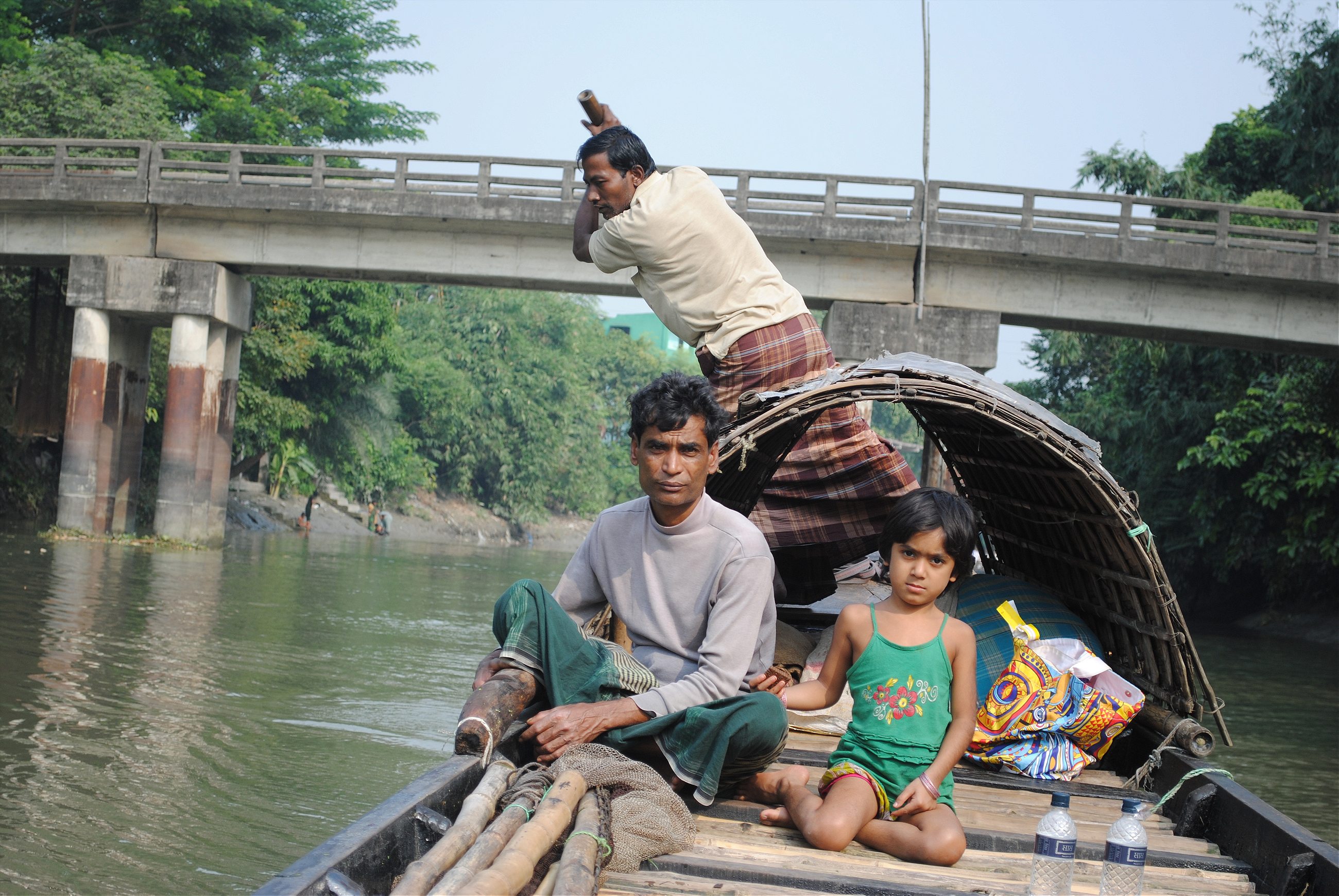
There are roughly 300 otter fishermen in Narail and Khulna districts, near the Sundarbans mangrove forest, which is infamous for its man-eating tigers. Some 2,000 people indirectly depend on income from otter fishing, like the young woman I saw in the village who was sewing a fishing net by her doorstep. Researchers with Jahangirnagar University in Dhaka recorded 176 otters who help fishermen, according to a study published in 2011. By comparison, there were more than 500 fishing otters about a decade ago.
The sun glimmers on the greenish water as the sonorous call to prayer drifts over the river and the otters swim and dive alongside the boat. When the fishermen steer the boat close to shore, the otters eagerly scramble onto the mud. They roll on their backs like dogs and root through leaves and stray debris; one otter gnaws at a discarded cigarette package.
On the riverbank above them, a black goat stares down at the squealing spectacle. Soon children in blue school uniforms gather to ogle the slippery creatures. Otters are near-sighted so they don’t seem to notice their audience.
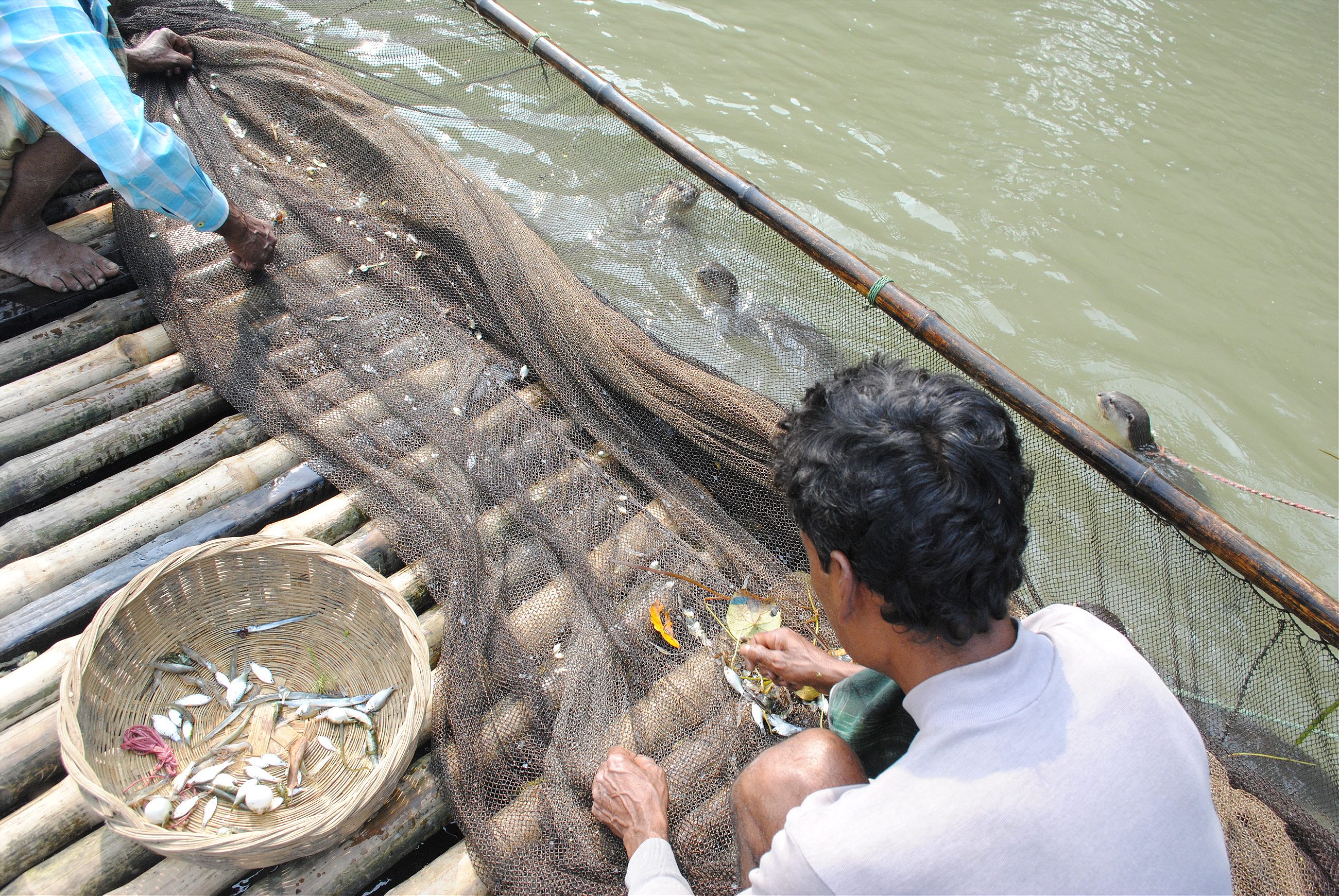
Then it’s back to work and the otters leap once again into the river. The otters don’t have names—they’re not pets. One even bit Biswas on his leg a few years ago. But the fisherman says, “The otter is our tradition that comes from our grandfathers. We love otters and we live from catching fish. The otter helps us.”
Would they keep the otters if there were no fish? Biswas shakes his head. It costs money to keep the otters and they have to earn their keep. But he says he will continue to work with otters as long as there are fish to catch.
The fishermen pull up their net and we retrace our route back to shore. One fisherman opens the bamboo box, and without any prodding the otters jump back inside. They push noses and paws through the slats, still squealing and scrabbling with claws that remind me not to get too close.
Near the riverbank, I hear more splashing and squealing. Another otter family? No, it’s a gaggle of children having an afternoon dip in the river. As the boat slides onto shore, they eagerly rush over for a glimpse of their village’s squeaky fishermen.